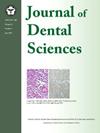miR-376a/Neuropilin-1轴介导口腔鳞状细胞癌癌变的体外研究
IF 3.1
3区 医学
Q1 DENTISTRY, ORAL SURGERY & MEDICINE
引用次数: 0
摘要
背景/目的近年来口腔癌的发病率稳步上升。最近的研究表明,探索具有自我更新、多能性和侵袭性的口腔癌干细胞(CSCs)已成为预测口腔鳞状细胞癌(OSCC)复发和转移的一种有希望的策略。先前的研究表明,microrna调节癌症的发生。然而,miR-376a/neuropilin-1 (NRP1)轴影响CSC性状的机制尚未完全了解。因此,本研究进行了深入的调查。材料和方法采用实时荧光定量聚合酶链反应(pcr)法测定scc SAS细胞系CSCs中smir -376a的表达。流式细胞术检测醛脱氢酶1 (ALDH1)活性和CD44表达。CSC表型通过自我更新、迁移和菌落形成测定来表征。荧光素酶报告试验证实了miR-376a和NRP1之间的直接相互作用。结果我们发现miR-376a在SAS-CSCs中表达下调。过表达miR-376a显著降低了几种CSC表型,包括ALDH1活性、CD44表达、迁移和集落形成能力(P < 0.05)。此外,荧光素酶报告基因检测证实了miR-376a与NRP1的直接结合(P < 0.05)。此外,NRP1过表达被发现可以逆转mir -376a诱导的迁移和自我更新的抑制(P < 0.05)。结论在我们研究结果的限制下,miR-376a/NRP1轴可能在OSCC的干性中起关键作用。靶向这一途径可能是抑制OSCC进展的一种有希望的策略。本文章由计算机程序翻译,如有差异,请以英文原文为准。
miR-376a/Neuropilin-1 axis mediates the cancer stemness in oral squamous cell carcinoma-an in vitro study
Background/purpose
The incidence of oral cancer has been steadily increased over the years. Recent researches indicated that exploring oral cancer stem cells (CSCs) characterized by self-renewal, pluripotency, and aggressiveness have emerged as a promising strategy for predicting oral squamous cell carcinoma (OSCC) recurrence and metastasis. Previous studies have demonstrated that microRNAs regulate cancer stemness. However, the mechanisms that miR-376a/neuropilin-1 (NRP1) axis influences CSC traits have not yet been fully understood. Therefore, an in-depth investigation was conducted in this study.
Materials and methods
miR-376a expression in CSCs derived from OSCC cell line SAS was quantified by quantitative real-time polymerase chain reaction. Aldehyde dehydrogenase 1 (ALDH1) activity and CD44 expression were assessed via flow cytometry. The CSC phenotype was characterized through self-renewal, migration, and colony formation assays. A luciferase reporter assay was used to confirm the direct interaction between miR-376a and NRP1.
Results
We found that miR-376a expression was downregulated in SAS-CSCs. Overexpression of miR-376a significantly reduced several CSC phenotypes including ALDH1 activity, CD44 expression, migration, and colony-forming abilities, respectively (P < 0.05). In addition, a luciferase reporter assay substantiated the direct binding of miR-376a to NRP1 (P < 0.05). Moreover, NRP1 overexpression was found to reverse miR-376a-induced the inhibition of migration and self-renewal, respectively (P < 0.05).
Conclusion
Within the limitations of our findings, miR-376a/NRP1 axis may play a crucial role in stemness of OSCC. Targeting this pathway could represent a promising strategy to inhibit OSCC progression.
求助全文
通过发布文献求助,成功后即可免费获取论文全文。
去求助
来源期刊

Journal of Dental Sciences
医学-牙科与口腔外科
CiteScore
5.10
自引率
14.30%
发文量
348
审稿时长
6 days
期刊介绍:
he Journal of Dental Sciences (JDS), published quarterly, is the official and open access publication of the Association for Dental Sciences of the Republic of China (ADS-ROC). The precedent journal of the JDS is the Chinese Dental Journal (CDJ) which had already been covered by MEDLINE in 1988. As the CDJ continued to prove its importance in the region, the ADS-ROC decided to move to the international community by publishing an English journal. Hence, the birth of the JDS in 2006. The JDS is indexed in the SCI Expanded since 2008. It is also indexed in Scopus, and EMCare, ScienceDirect, SIIC Data Bases.
The topics covered by the JDS include all fields of basic and clinical dentistry. Some manuscripts focusing on the study of certain endemic diseases such as dental caries and periodontal diseases in particular regions of any country as well as oral pre-cancers, oral cancers, and oral submucous fibrosis related to betel nut chewing habit are also considered for publication. Besides, the JDS also publishes articles about the efficacy of a new treatment modality on oral verrucous hyperplasia or early oral squamous cell carcinoma.
 求助内容:
求助内容: 应助结果提醒方式:
应助结果提醒方式:


